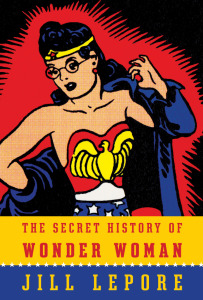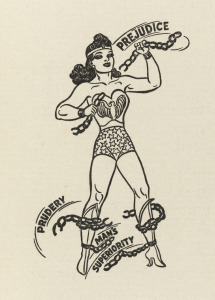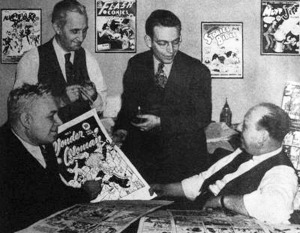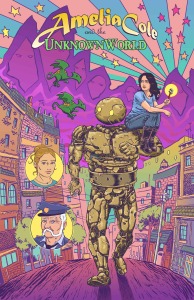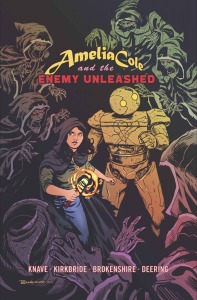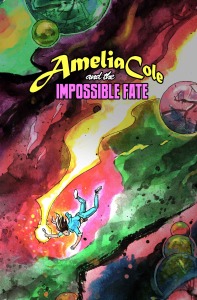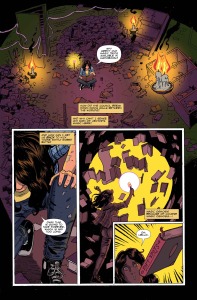(Tony Donley/Marcus Perry; 31 pages; ACTION LAB COMICS, 2018)
I’d always heard that famed theoretical physicist Albert Einstein was the kind of guy that you’d like to hang out with. You know, a wicked sense of humor, a definite hit with the ladies and, of course, a time-traveling super spy with a mean right-cross. Wait… what? That’s right, folks, Professor Einstein was/is/will be a member of a secret group – the Time Masons – who have vowed to fight those pesky time anomalies that tend to mess with everybody’s past, present and potential future; simply put, Einstein is one of a team of agents charged with keeping the time-line straight for all humanity. If that means he’s gotta kick a little megalomaniacal butt in the process, so be it. ALBERT EINSTEIN, TIME MASON is a wicked cool take on one of the most famous minds this world has ever known. In Tony Donley’s concept, Einstein is a quick-witted quipster, dealing out scientific barbs that sting nearly as much as his fists. With Marcus Perry fleshing out the script, the action and the acerbic wit comes at the reader in a fast and furious manner, punctuating Donley’s own stellar artwork. And, while we’re talking art… how about that amazing cover by Dave Johnson, huh? Donley also provides an equally cool variant

This first offering, “Brain Game,” finds ol’ Al traveling to the year 2214 to recover his brain, which was stolen shortly after his death in 1955. Did I mention the time anomaly thing? The professor’s grey matter has been heisted by a group of anti-socials calling themselves “Sci-Oscalists,” ostensibly to power a time robot which will enable their leader to enslave all existence. There are stereotypes a-plenty, but with everybody (including the characters) in on the joke, they are not hurtful or objectionable in the least. There’s a miniature mad scientist, suitably disorganized and bumbling henchmen and, of course, a large (as in tall, muscular and buxom) female, possibly of Aryan or Russian descent, acting as the madman’s personal body guard and second in command. Being outgunned, Albert does the only thing he can do: He surrenders… but, only until he can formulate a plan out of this weighty predicament. That plan is action-packed in a far-out Jim Steranko NICK FURY, AGENT OF SHIELD kinda way, but with more jokes. No sexist, Albert is not hesitant to mix it up with the bigger-than-life woman and, if need be, to deliver a few cheap shots. Most ongoing series (as I believe this one to be) will build to such a confrontation over a few issues in a grand story arc, but not here. I’m not sure how Donley and Perry can continue such a furious pace for our erstwhile hero, but I’m certainly up for the ride!

Now, about the art: Tony’s angular style is reminiscent of Steve Ditko at his best, with nods to Mike Zeck and the great Gil Kane along the way. The futuristic machinery borrows from both Ditko and, perhaps to a lesser extent, Jack Kirby. His colors are very old-school, flashy and bright, a style which lends itself well to the feel of the book. The lead character’s look is borrowed from – varyingly – Tom Selleck as MAGNUM, PI, Bruce Campbell, Ditko’s Doctor Stephen Strange and Bob Larson’s Tony Stark. The intricacy of the design and the artwork itself are actually more implied than fully realized; a stylistic choice that, again, works in the favor of the material. I certainly wouldn’t want to get lost in an overly busy panel to the extent that I lose the narrative and, therefore, the pure joy derived from taking this creation as a whole. By the time I arrived at the bottom of the last page and saw the “To be continued” line, I was salivating for the next installment. Very few books have ever made me feel that way. C’mon already, guys, with issue number two!






